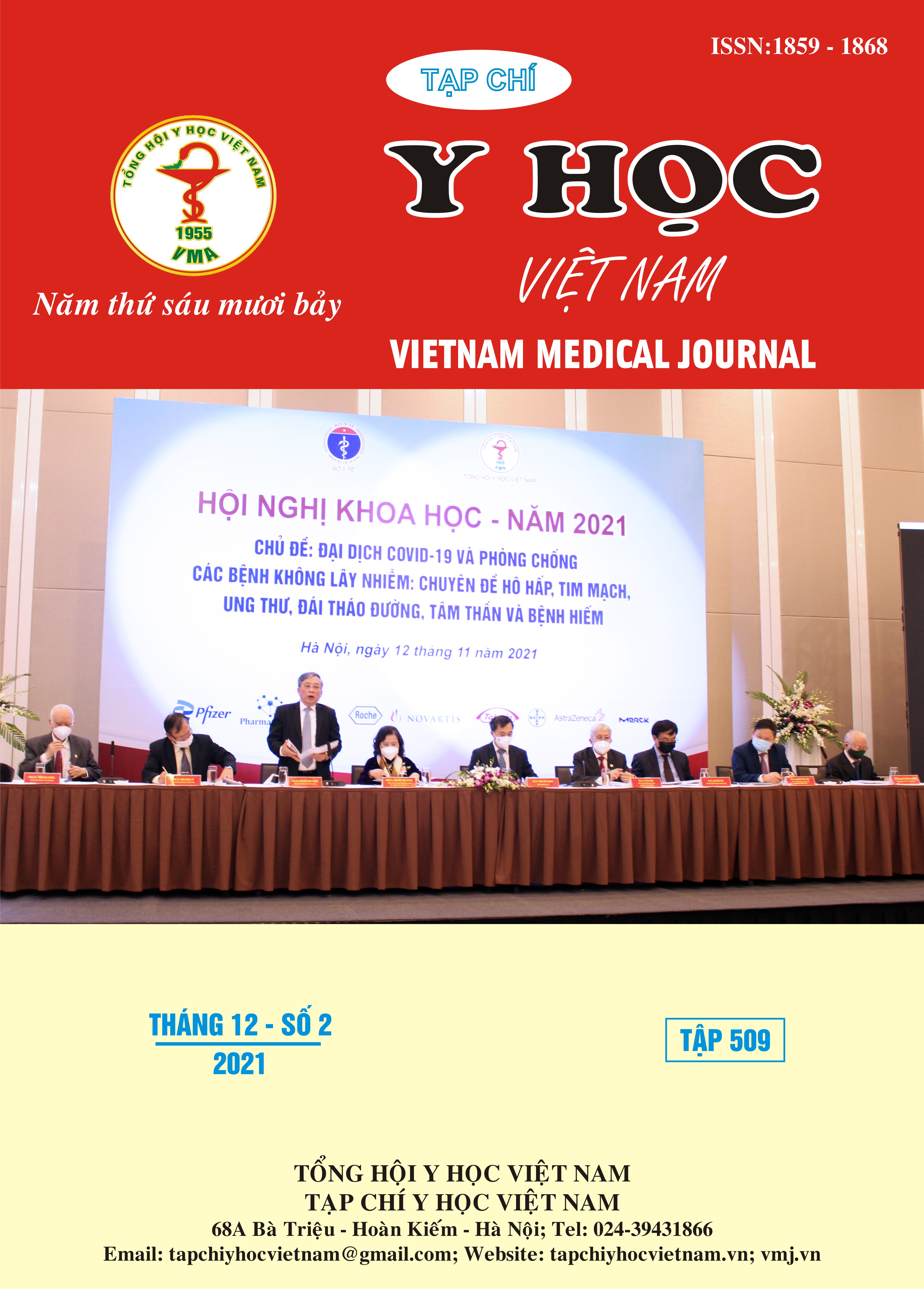PATHOLOGIC FEATURES OF COLORECTAL AND RECTAL CARCINOMA AT DA NANG ONCOLOGY HOSPITAL
Main Article Content
Abstract
Background: Colorectal cancer is one of the most common cancers in the world. Objectives: To comment on pathological features of colorectal and rectal carcinoma by classification of the World Health Organization in 2010. Determining the association between some pathological factors of colorectal carcinoma. Method: A cross-sectional descriptive study of 156 cases that have had surgery and diagnosed histopathology as colorectal and rectal carcinoma, at Da Nang Oncology Hospital from January 2018 to the end of August 2020. Re-read the copies, classify the histological type, histological grade, invasiveness, lymph node metastasis, tumor budding, dirty necrosis, intraepithelial lymphocytes according to WHO 2010 classification. Results: Adenocarcinoma NOS has the highest rate of 80.1%. The moderately differentiated histology accounted for the highest rate of 75.2%, the pT3 stage accounted for the highest rate of 60.3%. Rate of lymph node metastasis is 47.5%; dirty necrosis rate is 41.7%; intraepithelial lymphocytes accounts for 14.7%; tumor budding accounted for 33.3%. There is a relationship between dirty necrosis, intraepithelial lymphocytes, and tumor budding with invasiveness. Conclusion: Most common adenocarcinoma NOS. The moderately differentiated histology accounted for the highest percentage, most of the disease was detected in the late stage. The rates of dirty necrosis, budding of tumors in the stage T3 and T4 have higher than these rates in T1 and T2 stages. Meanwhile, in the T1 and T2 stages, the intraepithelial lymphocytes rate is higher in the T3 and T4 stages.
Article Details
Keywords
Pathological features, colorectal and rectal carcinoma
References
2. Bosman FT, Carneiro F, Hruban RH, et al. (2010), WHO classification of tumours of the digestive system, vol. 3. 4th ed Lyon: International Agency for Research on Cancer.
3. Bray F, Ferlay J, Soerjomataram I, Siegel RL, Torre LA, Jemal A. (2018) Global cancer statistics 2018: GLOBOCAN estimates of incidence and mortality worldwide for 36 cancers in 185 countries. CA Cancer J Clin. 68(6):394-424.
4. Chu Văn Đức (2015), Nghiên cứu bộc lộ một số dấu ấn hóa mô miễn dịch và mối liên quan với đặc điểm mô bệnh học trong ưng thư biểu mô đại trực tràng, Luận Án tiến sĩ, Đại học Y Hà Nội.
5. Đặng Trần Tiến (2007), Nghiên cứu hình thái học của ung thư đại trực tràng, Tạp chí Y học TP Hồ Chí Minh, 11(3):86-88.
6. Marzouk O and Schofield J (2011), Review of histopathological and molecular prognostic features in colorectal cancer, Cancers (Basel), 3(2):2767-810.
7. Nakamura T, Mitomi H, Kanazawa H, et al. (2008), Tumor budding as an index to identify high-risk patients with stage II colon cancer, Dis Colon Rectum, 51(5):568-72.
8. Nguyễn Văn Hồng (2011), Nghiên cứu đặc điểm mô bệnh học và hóa mô miễn dịch (Ki67 và p53) ung thư đại trực tràng tại bệnh viện 19.8 - Bộ Công An, Đề tài nghiên cứu cấp Bộ.


